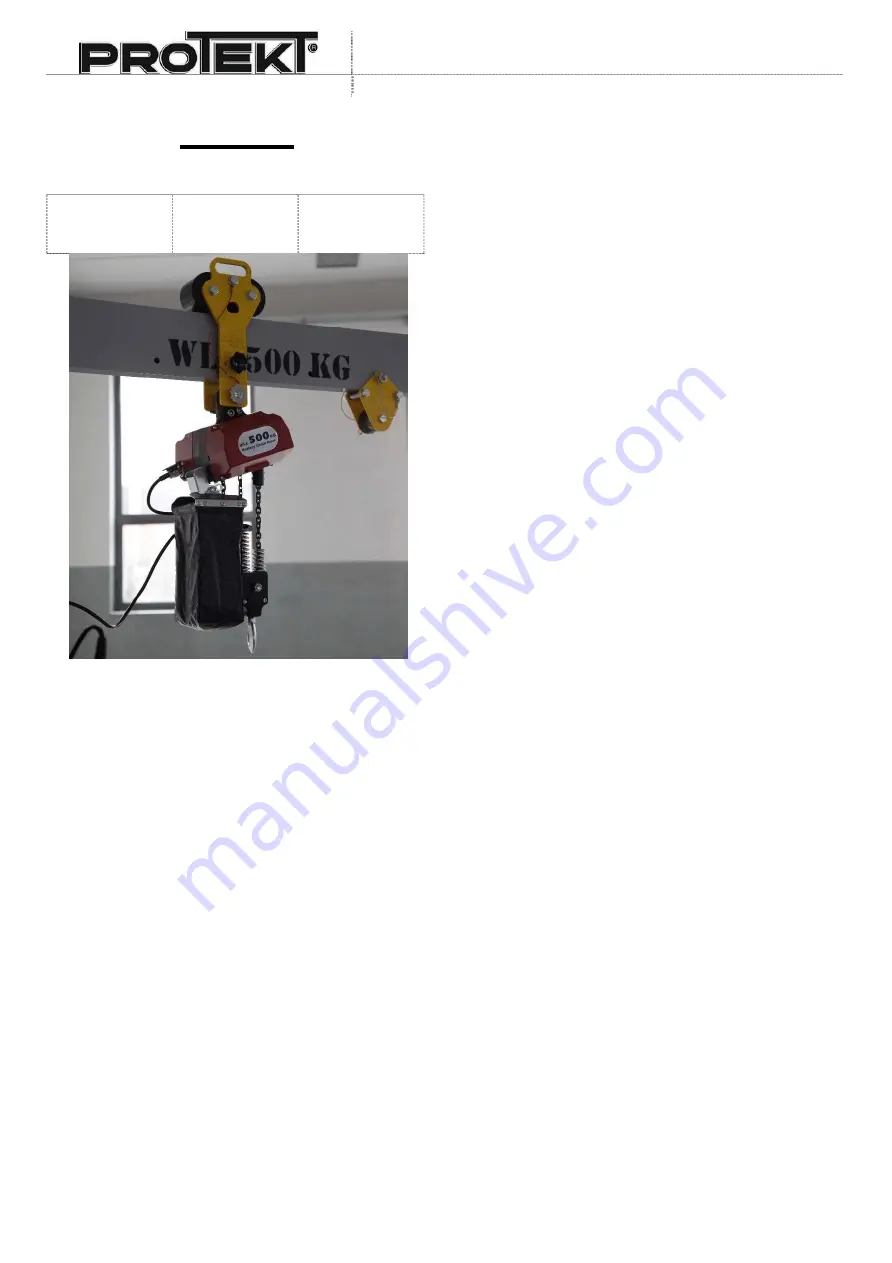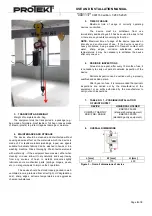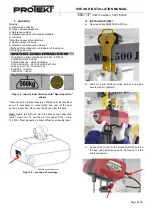
USE AND INSTALLATION MANUAL
*0001117*
0001150 edition: 1/28.05.2020
Page
1
of
5
Machine
Directive
2006/42/EC
RUP507
BATTERY-POWERED CHAIN
HOIST
Figure 1 - Overview
TABLE OF CONTENTS:
1.
...............................................
2.
........................................
3.
...........................................
4.
....................................
5.
TIME OF USAGE
...............................................................
2
6.
PERIODIC INSPECTIONS
...............................................
2
TABLE NO. 1 - POSSIBLE INSTALLATION OF HOIST
8.
..................................................
9.
............................................................................
...........................................
11.
ESSENTIAL PRINCIPLES FOR USE OF PERSONAL
FALL PROTECTION EQUIPMENT
Error!
No
bookmark defined.
12.
WARRANTY.........
Error! No bookmark defined.
13. IDENTITY CARD
................................................................
5
1. GENERAL DESCRIPTION
Battery-powered chain hoist RUP507 is equipped with
working chain 4x12mm (class 80). Hoisting height is 6m. The
device is designed for lifting loads. Battery life at full load is
~20…25 minutes. Battery charging time ~70 minutes.
The device RUP507 is formed by:
a) general hoist designed for rewinding of working
chain. The device is fitted with mounting module
KSB100-352-003 allowing for a direct installation on
trolley KSB100-350-000,
b) detachable control with 2m long cord and plug to
which the battery is connected,
c) two batteries 18V 4.0Ah,
d) wall charger for battery charging.
e) Textile bag for working chain.
Hoist RUP507 can be mounted on various devices using
universal brackets. Please refer to Table 1.
2. LOAD LIMIT AND STRENGTH
a) GENERAL INFORMATION
Minimum Breaking Strength (MBS): 15kN
.
Working Load Limit (WLL): 500kg
Safety Factor (SF): 3:1.
The device can be loaded with work force along the
profile to which it is fixed as shown in Figure 2.
The maximum load that could be transmitted in service
from the device to the static construction
– 6 kN (
The
maximum load that could be transmitted in service from
the device to the static construction).














